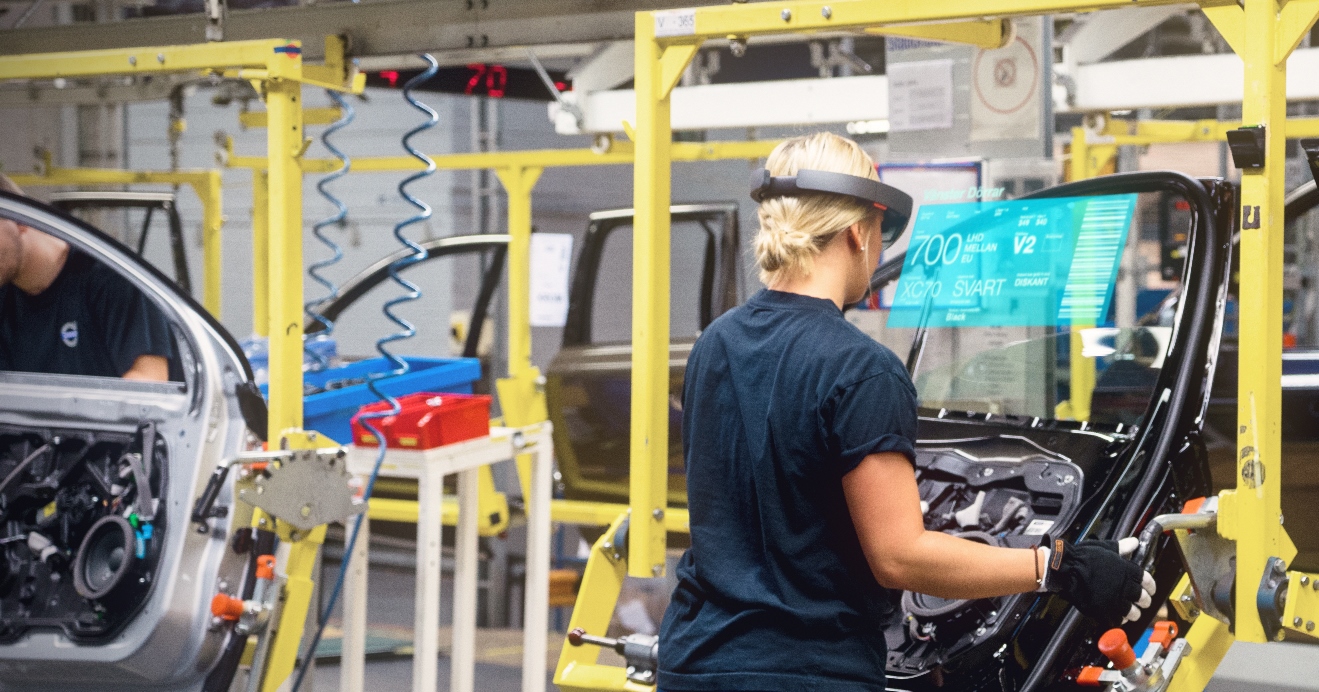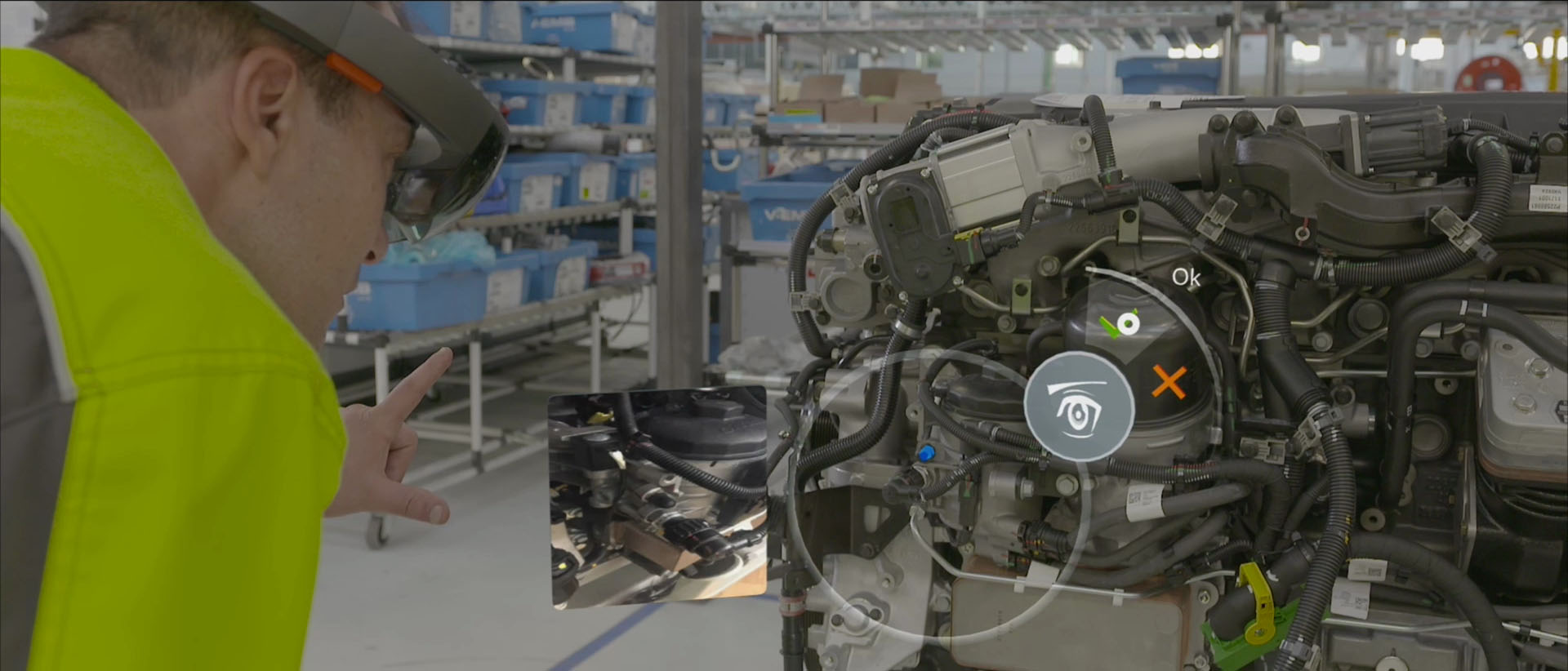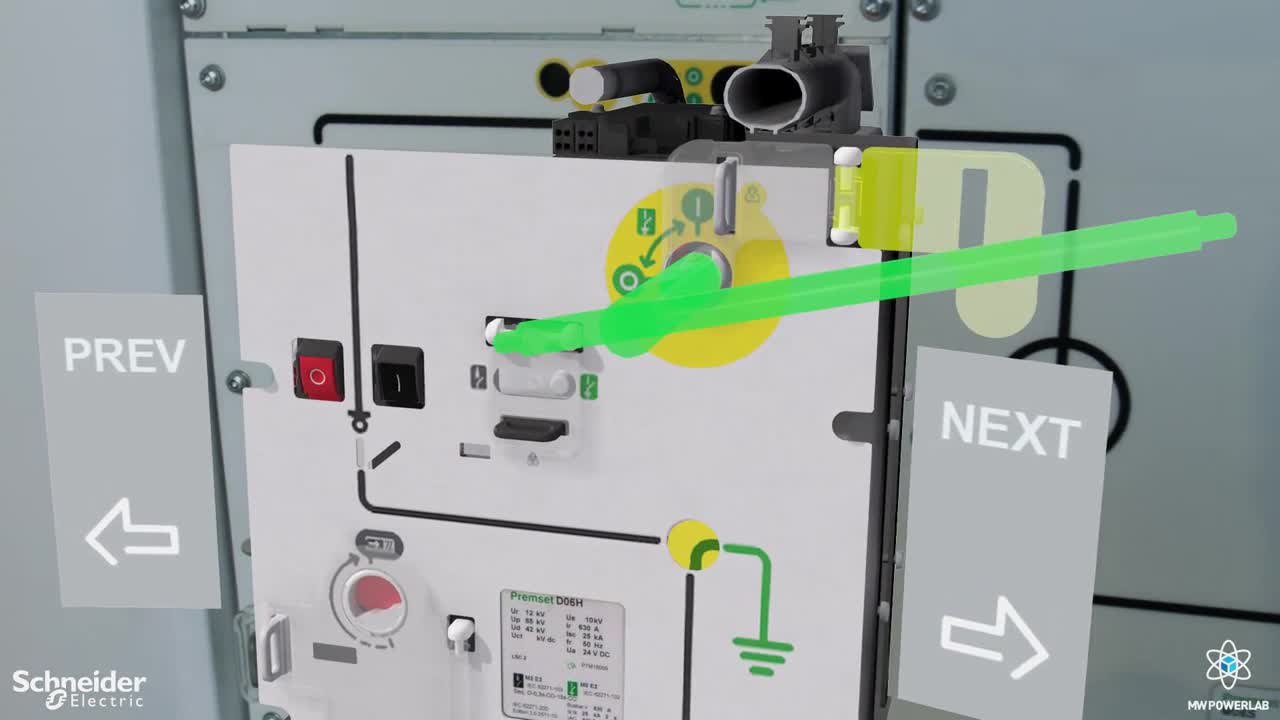Smart glasses, enhanced visual capabilities, assistance and guidance for operations, informed decisions and data exchange, all in real time: mixed reality, a combination of reality, augmented reality and virtual reality, has obvious advantages for industry, and can turn operators into “augmented workers.’’

So how does mixed reality work? A cross-between an augmented reality headset and a self-contained, holographic computer, Microsoft’s HoloLens headset enables users to engage with their digital content and interact with holograms in the world around them. Launched in 2015, HoloLens is an integral part of the Windows Mixed Reality platform introduced as part of Windows 10.
The augmented operator
The new connected operator is one example of the digital transformation of industry. The operator 4.0 is equipped with mobile devices (smartphones, tablets, smart glasses) specially designed for their working environment, and thus has new ways of communicating and exchanging information (data, photos). According to a report by the Syntec numérique, France’s union for digital companies, called Transforming industry with digital, “They can receive real-time remote assistance and advice from experts.”
Mixed reality improves operators’ operational efficiency and decision-making capabilities, as the following examples show.
Augmented quality with Renault Trucks
Mixed reality is also being deployed at Renault Trucks so that quality control operators will be able to see instructions to guide them through complex control operations instead of the traditional paper instructions.

Beenen runs automated factories with HoloLens
Beenen BV, a Dutch system integrator specialising in integrated automation solutions for manufacturing, can now remotely operate and run its industrial facilities using HoloLens (see video).
Mixed reality maintenance for Schneider Electric
Having experimented with augmented reality for training and skills transfer, Schneider Electric is now using mixed reality for maintenance. Thanks to Microsoft HoloLens and the related apps, Schneider’s operators can follow maintenance procedures, gather all the relevant data on previous maintenance operations, receive alarms, etc.

Already 50% of factories are using augmented and virtual reality
For the past two years, Microsoft has been making considerable efforts to promote mixed reality adoption: developing 3D-creation tools, resources for application developers, protective glasses to meet safety standards in factories, and launching the Mixed Reality Partner Program. Members of this program include development studios and mixed reality integration specialists (including Econocom.)
Mixed reality is particularly useful in the following sectors:
- Manufacturing, a sector which is fond of experimenting. According to a report by Bank of America Merrill Lynch, more than 50% of manufacturing organisations are testing augmented reality and virtual reality to improve productivity and quality of products and cut production costs.
- Remote maintenance and assistance
- Education and training
- Design
- Architecture and construction
- Retail
The global mixed reality market is expected to reach USD 6.86 billion by 2024, according to a new report conducted by Grand View Research, Inc.
HoloLens: partnership between Econocom and Microsoft
Econocom and Microsoft has signed a partnership to distribute Microsoft HoloLens in France, the United Kingdom, Belgium, Spain, Ireland, Italy and Luxembourg. Read the official press release.
Sources : Windows Blogs, Manufacturing Business Technology, Grand View Search

















Great post!
I loved one your post and here you shared great things of how hololens help your business and go to new level with advanced way. The main things is help you to feel real life using Virtual reality.
The AR devices have been around for a while now – especially those for industry e.g. Brother AiRScouter. I’m sure military have some impressive toys as well. Hopefully this tech will go main stream.